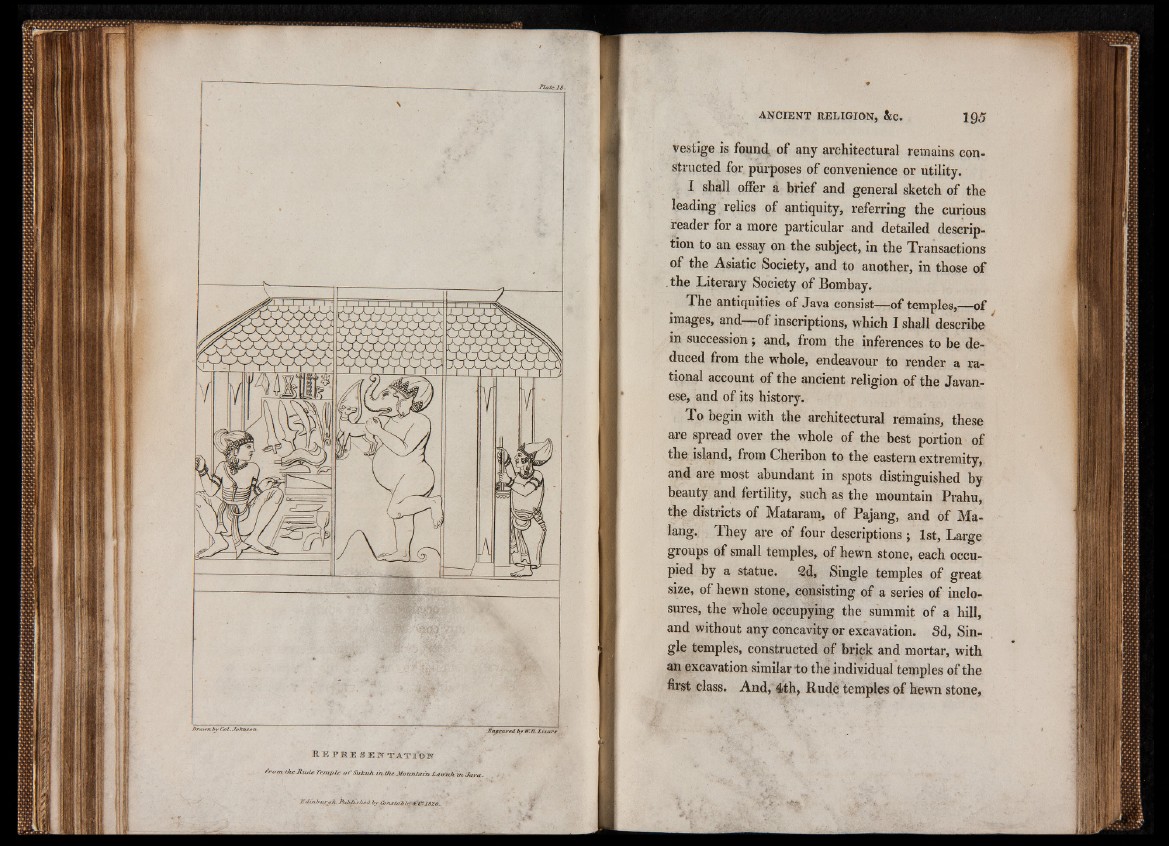
R E P Ü E S E l T i T f O I
from, the TliuLe Temp Le o f SuEuA in.theMoitTttain.LiLH'uh. j)t Jara.
Edûib Ltf-c/h, PtjJjJxshjtrL hy Consta2>lr StC9l820.
vestige is found, of any architectural remains con-
structed for purposes of convenience or utility.
I shall offer a brief and general sketch of the
leading relics of antiquity, referring the curious
reader for a more particular and detailed description
to an essay on the subject, in the Transactions
of the Asiatic Society, and to another, in those of
. the Literary Society of Bombay.
The antiquities of Java consist—of temples,—of
images, and—of inscriptions, which I shall describo
in succession; and, from the inferences to be deduced
from the whole, endeavour to render a rational
account of the ancient religion of the Javanese,
and of its history.
To begin with the architectural remains, these
are spread over the whole of the best portion of
the island, from Cheribon to the eastern extremity,
and aré most abundant in spots distinguished by
beauty and fertility, such as the mountain Prahu,
the districts of Mataram, of Pajang, and óf Malang.
They are of four descriptions ; 1 st, Large
groups of small temples, of hewn stone, each occupied
by a statue. SSd, Single temples of great
size, of hewn stone, consisting of a series of inclosures,
the whole occupying the summit of a hill,
and without any concavity or excavation. 3 d, Single
temples, constructed of brick and mortar, with
an excavation similar to the individual temples of the
first class. And, 4th, Rude temples of hewn stone,